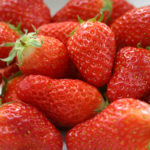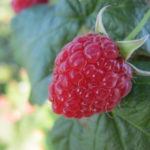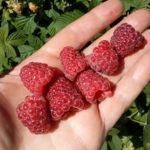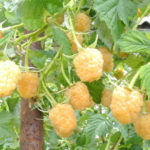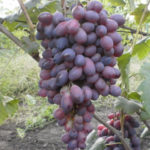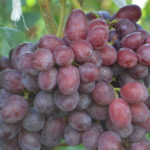Rumba strawberry variety
Rumba is a non-repairable variety of garden strawberries (strawberries) of medium early ripening, universal use. It was bred by specialists from the Dutch company Fresh Forward. Differs in high productivity, excellent presentation of berries and decent taste. Suitable for growing in the continental climate of Russia, Belarus and Ukraine. It shows itself well both in open and protected ground, in tunnels and greenhouses, in hydroponics. This variety is declared as very promising, capable of replacing one of the most popular and proven mid-early varieties - Honey... And she more than justifies the hopes placed on her.
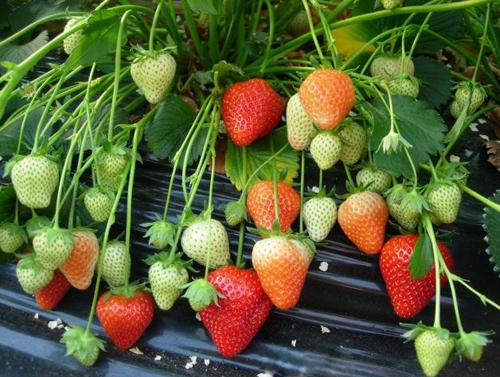
The plant is powerful, abundantly leafy, dense bushes, rather spreading. Usulation is moderate. The leaves are large, trifoliate, with large obtuse teeth along the edges, dark green in color. The flowers are bisexual, white, with a large amount of high-quality pollen, which has a very positive effect on pollination, and, as a result, on the quantity and quality of the crop. Peduncles are powerful, long, multi-edged (about 5-7 large berries or more are formed on one peduncle), located at the level of the leaves. Strawberry fruits are easily visible, making harvesting quicker and easier - a very important indicator when grown commercially on a large scale.
Rumba berries are spectacular, regular conical and round-conical shape, very homogeneous in the total mass. The skin is dark red at the stage of technical ripeness; when fully ripe, it acquires a cherry hue. The pulp is bright red, juicy, firm, but not firm, with a very bright aroma of wild strawberries. The flavor of the variety is very good, the berries are sweet, with a subtle hint of sourness, in general, the taste is very harmonious and pleasant.
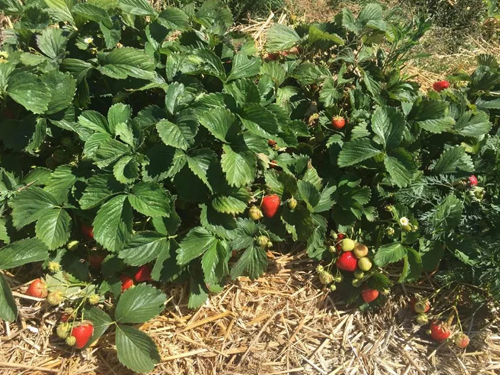
Strawberries are versatile in use, are equally wonderful both fresh and processed, suitable for freezing, will be an excellent addition to desserts and other dishes. The berries perfectly tolerate transportation, are excellently stored, according to these characteristics, Rumba is superior to Honey. Fruits retain their marketability and taste for a long time, and on the market they attract the attention of buyers with their excellent appearance. In short, the variety is ideal for growing for the sale of fresh produce, which is confirmed by many farmers and gardeners-entrepreneurs.
Our heroine bears fruit very steadily and for quite a long time, the berries are large throughout the season. The average weight of the fruit is 25-30 grams, with the first harvest a little more - 35-40 grams. Strawberries are high-yielding, but they belong to the intensive type, therefore, their productivity is highly dependent on agricultural technology. For an ordinary gardener, it is quite possible to achieve results of 400-500 grams of berries from a bush. In commercial cultivation, rates increase to 1 kg of fruit per plant and more. In principle, our heroine is on a par with Honey in terms of yield, but she beats him in taste and some other characteristics, and the originator declares that it will be more cost effective to grow Rumba compared to her “rival”. And this statement can be believed by reading the reviews of farmers.
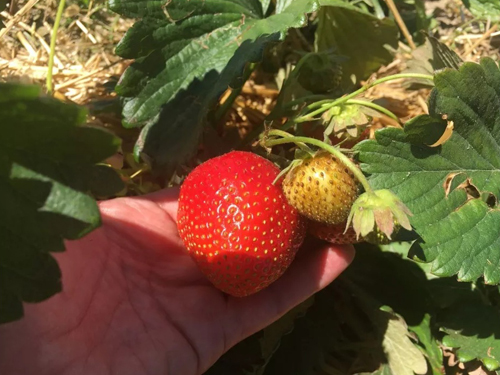
Strawberries ripen in the mid-early period, someone calls them early, but this is not entirely true. In its homeland and in the southern regions, it, of course, can begin to bear fruit almost at the same time as early-ripening varieties, but in many regions of Russia it behaves like a mid-early, and sometimes even as a mid-season. Thus, ripening can start in early to mid-June. On average, the harvest of Rumba begins almost at the same time as Honey (a little later, with a difference of 2-3 days), a little later Clery, earlier Darselect and 5 days faster Elsants... In protected ground, under shelters, strawberries ripen much earlier, at the level of early maturing varieties.
The variety is famous for its excellent immunity, it is very resistant to fungal diseases, especially various spots and gray rot. Gardeners confirm this information, but farmers are advised to be on the alert - preventive treatments are still highly desirable. But on the other hand, Rumba does not require an increased number of treatments against diseases and pests, so you can save on the purchase of drugs. But in this case, one should not forget about the timely rejuvenation of the plantation, otherwise the savings can unexpectedly fly into a pretty penny.
Strawberries cannot boast of good winter hardiness, frost and drought resistance, not in all regions they will feel comfortable and justify their hopes. Even in the central zone of Russia, it is recommended to provide planting with good shelter both in winter and in spring. In southern regions with hot summers with insufficient care, the variety reduces yields, especially dry periods affect the number of berries. In general, Rumba can be classified as "sissy", since it is possible to reveal its full potential only with very painstaking care and strict control over the growing conditions.
We will not talk a lot about agricultural technology, we will list only the main "keys" that will help you achieve better results. Planting should not be too dense, about four plants are planted per square meter. The distance between the strawberry bushes should be at least 25-30 cm, if possible, it is advisable to do more intervals. Excessive thickening is fraught with a decrease in yield and a deterioration in the taste of berries. The plant is demanding on soils, loves slightly acidified loose soils, on problem and alkaline soils, Rumba will not please with taste.
One of the most important points of agricultural technology is that the variety needs regular abundant nutrition. This nuance greatly affects the taste of strawberries. There are quite a few reviews that the berries are fresh, "foamy", but this problem usually arises precisely because of agrotechnical errors, including due to lack of nutrition. Particular attention should be paid to providing plants with mineral complexes, top dressing both under the root and on the leaf is relevant. And the last nuance of care - update the planting material in a timely manner. In commercial cultivation, it is better to use plants in a one-year or two-year culture, and gardeners can keep the plantation without rejuvenation for about 4-5 years, although it is still better to update it after at least 3 years of use, so as not to be disappointed in the yield.
Let's say a few words in conclusion. Rumba is a very promising variety that can please both the gardener and the farmer. In general, it is more "sharpened" for commercial cultivation, and it fully justifies this direction, not yielding to the generally accepted favorites of the strawberry market. But gardeners still disagree. Why settle on your site a Dutch sissy, when full of other varieties, no worse, moreover, with less maintenance requirements? And about the taste, the controversy also does not subside. In general, you should try to grow Rumba yourself, and only then draw conclusions based on personal experience.
